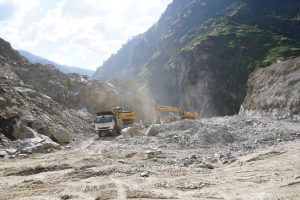DUNGDURO, KISHTWAR — Until a few years ago, Ghulam Hassan Magray, 36, was living comfortably in his native village, Sewerbatti, located just on the banks of the Chenab River. Magray owned six kanals of land, which roughly translates to 0.75 acres, that was used for agricultural purposes. The family used this land to cultivate rice, corn, vegetables, apples, pears, and walnuts, among other things. But the Magrays were forced out of their ancestral house in exchange for meager compensation in 2017 to make way for a hydropower project.
India is constructing seven new dams in Kishtwar, a region of dense forest in India-administered Kashmir – Bursar Dam (800 MW), Pakal Dul (1000 MW), Kwar Dam (540 MW), Kiru Dam (624 MW), Kirthai-I (390 MW), Kirthai II (930 MW), and Ratle Hydroelectric project (930 MW). Work on four of the dams has already begun.
Aimed at generating 5,190 megawatts of hydroelectricity, these projects will, however, affect the lives of over 20,000 locals, including members of Indigenous communities who depend on the forest for survival.
Sewarbatti was a small village with only 36 households. Only construction workers now occupy the lands and the once-bustling village is a ghost town. These families together owned 230 kanals of land, which was acquired by the government to construct the Dungduro hydropower project with a capacity of 1,000 MW. The land was purchased in exchange for 230,000 Indian rupees (around $2,800) per kanal.
While the government painted a rosy picture before acquiring the land, all is not well in the village. People believe they were short-changed by the administration in terms of compensation and rehabilitation. According to locals, the compensation was not enough to even purchase land in the nearby villages, let alone move to the main town of Kishtwar. The government’s ambitious hydropower project and its unplanned implementation left the families landless and homeless, with no substantial means of sustenance.
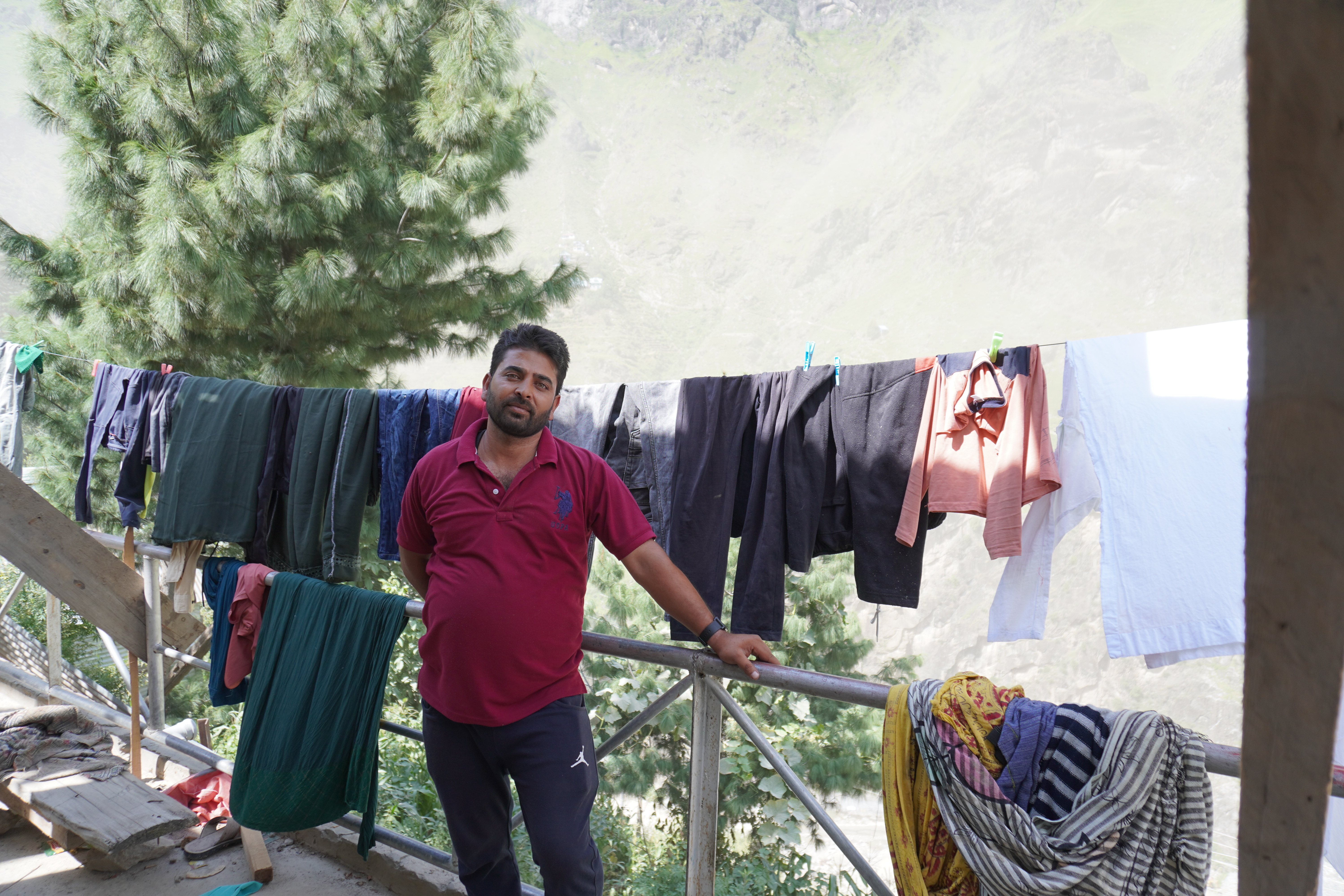
Ghulam Hassan Magray just outside his house in Dungduro. Photo by Safina Nabi.
Hassan, who works as a contractor in the neighborhood, said that the people of the village lost everything due to the project. “We were self-sustaining and did not have to run to the markets for our daily needs. Be it vegetables, rice, pulses, or fruits, we were able to cultivate everything for our daily consumption. Families would sun-dry them to stock up for the harsh winters,” he said.
According to Hassan, the compensation rate was decided in 2017 while the work started in 2019. “In those two years, the cost of land and construction materials went up exponentially. When we protested against the meager compensation, we were threatened with false cases under sedition laws such as the Public Safety Act,” Hassan added.
After receiving one-third of the allocated compensation, Hassan and his family moved to Dungduro and constructed a small one-story house. But soon after they moved in, they noticed that a headrace tunnel was being built under the same village.
“If you see, we live on the top of a little hill. Under this hill, they are constructing a 9-kilometer-long tunnel for the water to flow from the river to the powerhouse,” he said. “To create this tunnel, they continuously blast the hill inside, which leads to tremors across the Dungduro village. Our houses have now developed huge cracks and are becoming increasingly risky to live in.”

A wave of dust fills the air, as part of a hill near Hassan’s house was blasted to create a tunnel. Photo by Safina Nabi.
Dams form key structures for harnessing hydroelectric power, with all its advantages over other sources of large energy generation and control of floods. Their number, height, and economic, and social importance have increased exponentially over the last few decades.
Michael Kugelman, director of the South Asia Institute at the Wilson Center in Washington, D.C., and a leading specialist on South Asia, said all large dams pose ecological risks and those in Kishtwar are no exception, especially because as many as seven of them are expected to be built close to one another.
“There’s reason to worry about the ecological balance, impacts on marine life in the Chenab River, and earthquake risks. This is an area of high seismicity, and that means large-scale dam development could increase the chances of a major earthquake,” he said.
The Chenab River originates in Baralacha pass in Himachal Pradesh and flows through Kishtwar for over 500 kilometers – covering Doda, Ramban, Reasi and Akhnoor districts in Jammu and Kashmir in India – before flowing to Pakistan. More than two dozen hydropower projects have been planned for the river and its tributaries in Himachal Pradesh and Jammu and Kashmir alone. One such region is Chenab Valley in Kashmir, which is an active seismic zone and has a history of earthquakes.
Over 70 major hydroelectric projects on the Chenab are in various stages of planning, construction, and operation with a combined capacity of over 13,000 MW. These projects are spread across India and Pakistan. From affecting livelihoods to destroying the ecological stability in these areas, the dams have left locals and experts worried about the safety of the region and the detrimental impact of these dams.
Resettlement, downstream hydrology, muck generation and disposal, the cumulative impact of submergence, loss of forest land and habitats, and impact on fish such as the famous Chenab Trout are a few of the issues arising out of these hydropower projects. These dams also impact the region’s seismicity, silt discharge into the river, transport and road construction, ambient air quality, local water sources, groundwater, and the region’s overall water security.
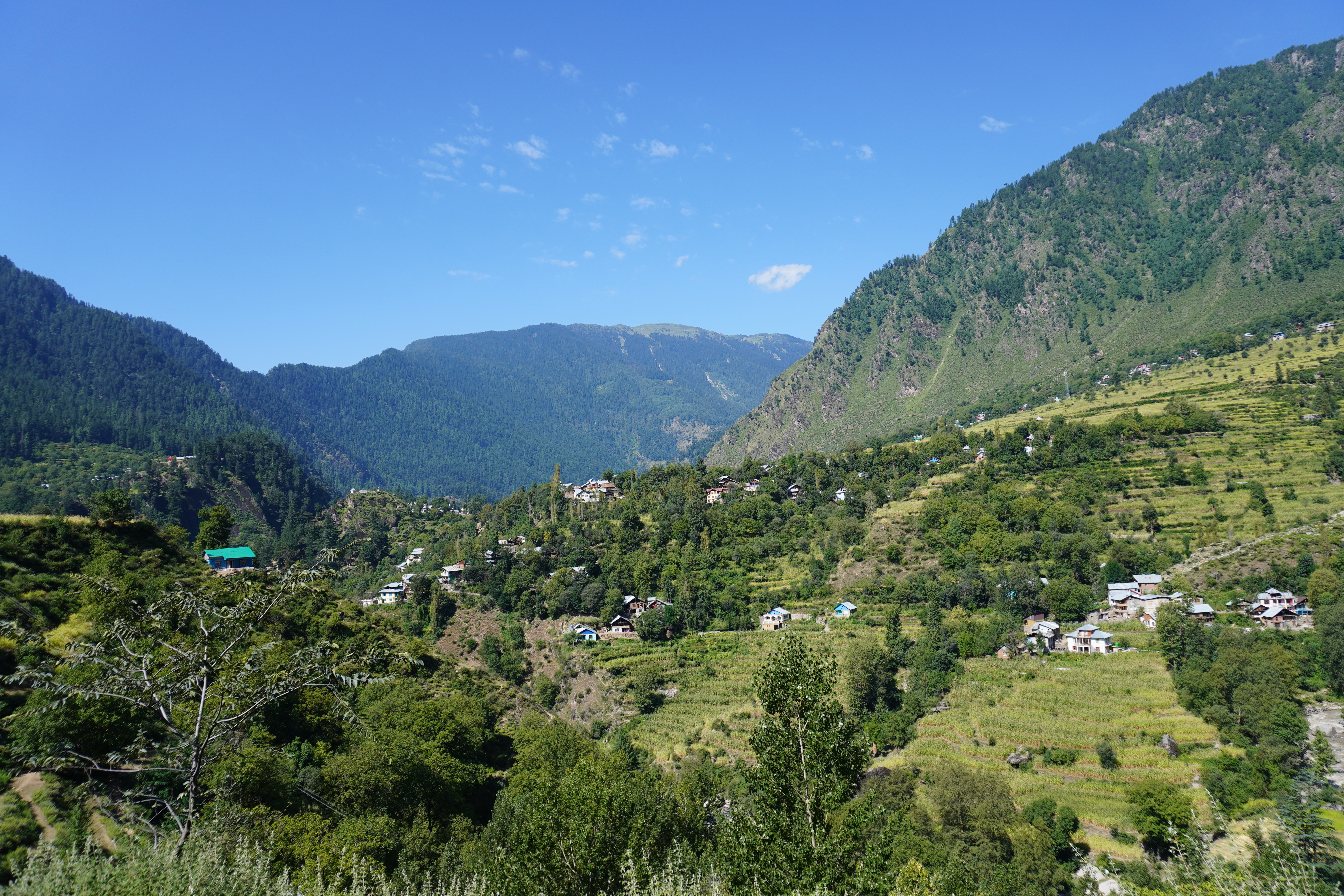
Seven villages of Kishtwar are in danger zone due to dam construction. Photo by Safina Nabi.
Multiple villages have been completely displaced due to the Dungduro hydropower project. These are Sirchi, Pohar, Krosa Sounder, and Sewarbatti Dachan. Three more fall in the danger zone – Resri Dachhan, Thachna Dachhan, and Suid Dachhan.
While Hassan and other villagers are worried about their everyday life and living conditions, Ghulam Nabi Ghafil, 50, is worried about the change in weather patterns, which is affecting the crops in the entire area.
“The entire ecological balance here has been disrupted. In the spring, before we sow seeds, there is continuous rainfall in the region. If any crop survives that weather, they are destroyed in the sudden heatwave of summer – a phenomenon hitherto unknown,” said Ghafil, a resident of Loharna village, who owned around 18 kanals of ancestral land in the village. Nine kanals of his land have been acquired for the power project.
“These villages now fall under the high-risk zones because when the construction of the dams is completed, the level of water will rise due to climate change. It will easily drown these villages,” he claimed. “The companies change their safety mark every time and prepare false reports. For instance, in one report, they marked the danger zone 10 meters below. This was done to ensure the removal of 250 households from the danger zone thereby making them ineligible for any compensation.
“We trusted them with our lands and houses. And now, they have trapped us.”

Asif Hussain, sarpanch of Janakpur village Kishtwar. Photo by Safina Nabi.
Asif Hussain, sarpanch of Thachna village in Janakpur, had cultivated 12 kanals of land since he was young but more than half of that land has now been acquired for the power project. “We were looted in the name of compensation. In 2017, they did not mention the real picture and quickly wrapped everything up. A small portion of the money was handed over to the villagers,” Hussain said.
“Later, when we went to the main district, we got to know what was happening. When we moved the court, we learnt that the NHPC had already filed a caveat. It took us three years just to overcome that loophole and go ahead with the case. We were able to file a case about the villages that fall under the danger zones just six months back,” he said.
Hussain said that despite promises of permanent jobs in the NHPC, the Indian government’s hydroelectric corporation, their families received no offers of employment. “We were promised permanent jobs in the NHPC. But since 2017, our children have not been employed even as laborers in these projects. Neither were we compensated for our fruit trees nor anything else. We are only being asked to run from one government office to another with a bunch of files,” he said.
Kugelman said that the track record in terms of compensation was poor. “Large dam construction often pushes people off their land, with major livelihood implications. The hope is that the authorities would compensate people whose land is taken away, or at least help them find new homes. But given the track record with dam construction in the past, I’m not sure that’s on the cards,” he explained.
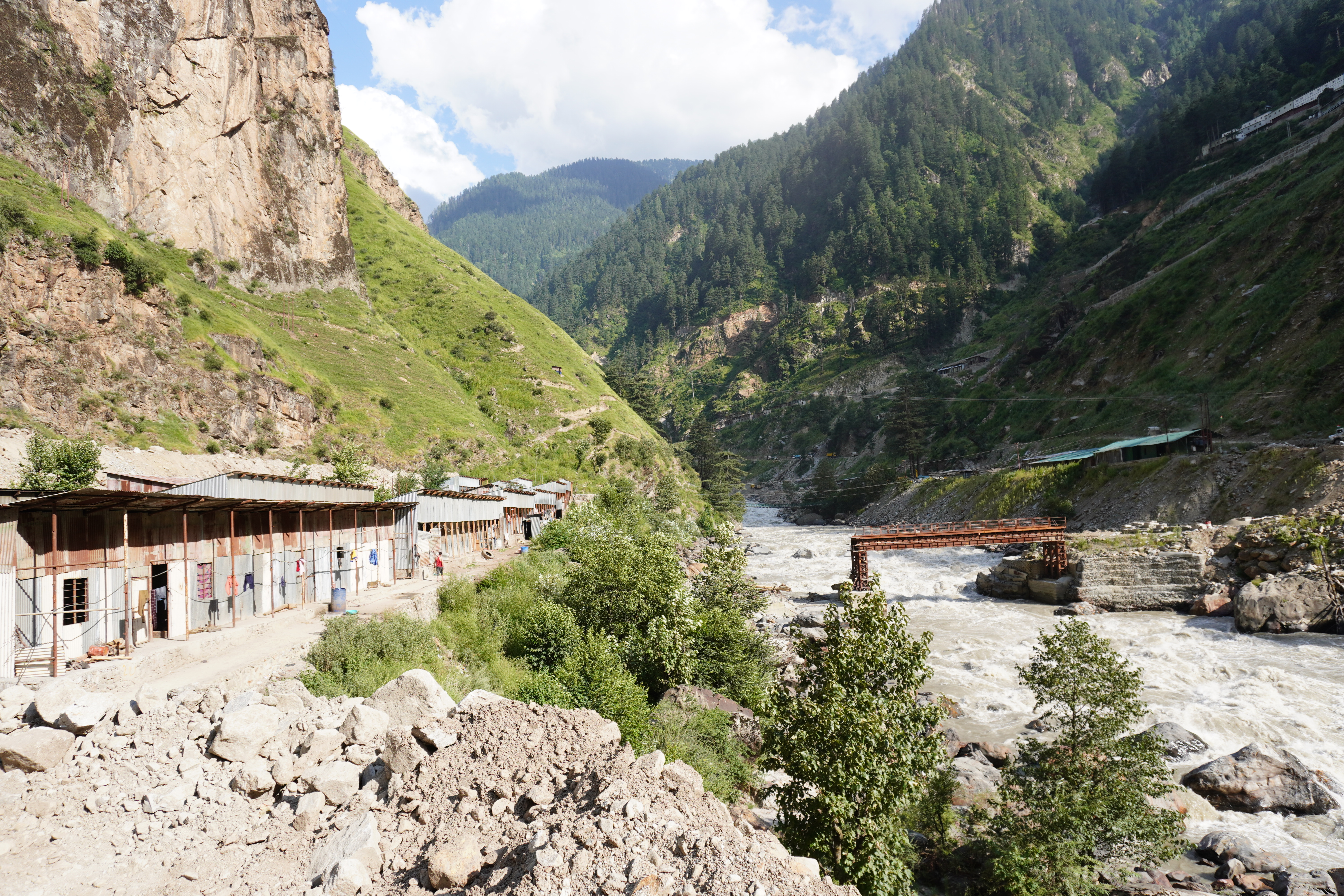
A temporary shelter construction near the dam site. Photo by Safina Nabi.
The first storage project being constructed by India – the 800-MW hydroelectricity project on Marusudar – will submerge nearly a dozen villages and displace hundreds of families. Marusudar is also the largest tributary of the Chenab – a river that flows into Pakistan.
The Indus Waters Treaty of 1960 allows India to build dams on rivers allocated to Pakistan, including the Chenab, so long as they do not prevent water from flowing downstream to Pakistan. “This was the treaty’s way of helping reduce risks to Pakistani water insecurity. If these dams do store excessive amounts of water or bottle up water in a big way, that could spell trouble for Pakistani water security and heighten India-Pakistan tensions,” Kugelman explained.
Like India, Pakistan is also working on multiple dam projects. This is because mountainous regions with little arable land and negligible industrial manufacturing base in the larger part of the Himalayas find harnessing hydroelectric potential as a necessary source for financial and economic growth. This is also why Pakistani officials keep a close eye on similar developments on the Indian side.
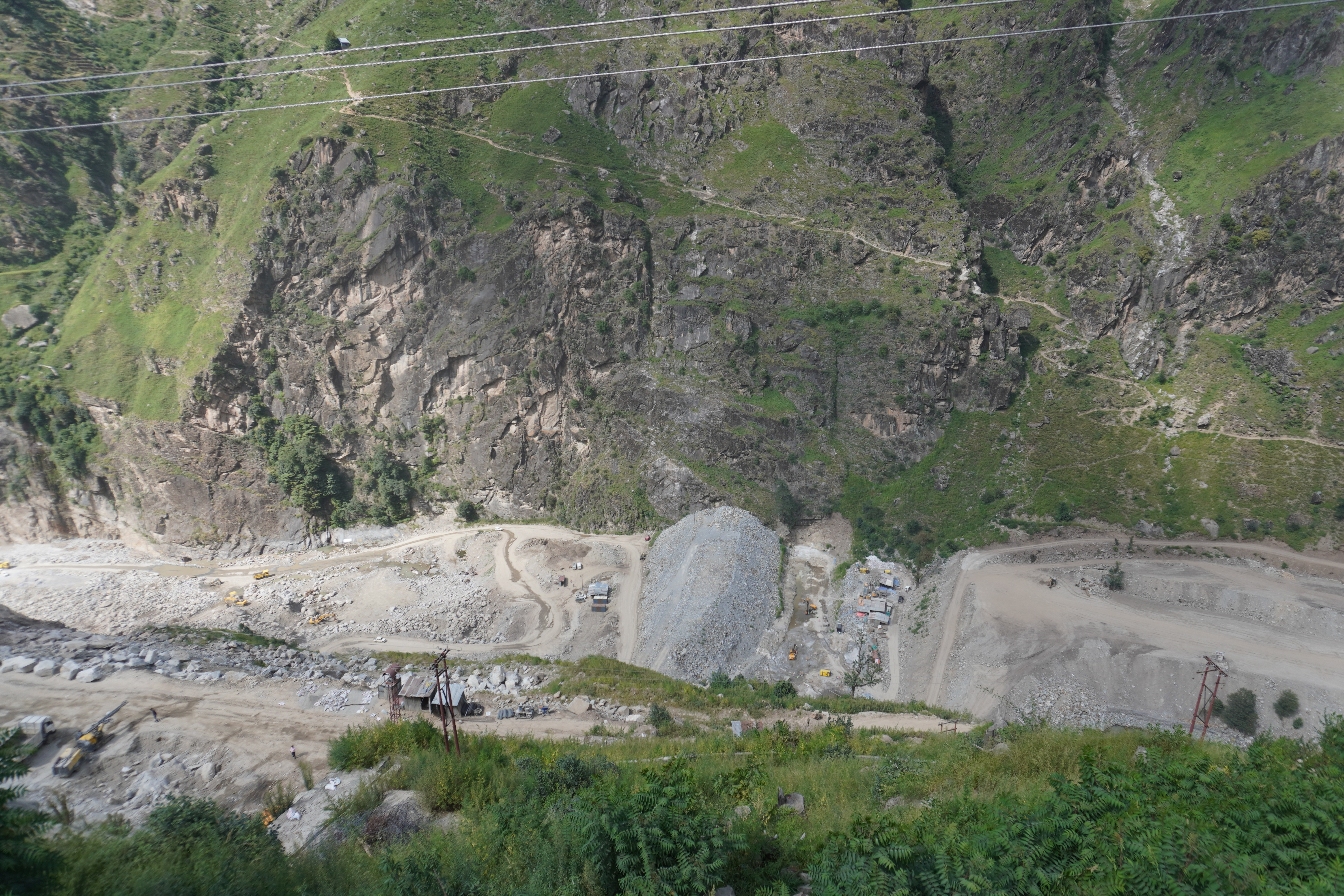
The construction site of Pakal Dul Dam in Dungduro. Photo by Safina Nabi.
In January 2019, a three-member Pakistani delegation visited the Chenab Valley site. The team comprised Pakistan’s Indus Commissioner Syed Mohammad Mehar Ali Shah, Advisor Ushamn E Ghani, and Joint Commissioner Tahir Mehmood Hayat. The tour was an obligation imposed on both countries by the Indus Waters Treaty. The details of the visit and deliberations on multiple related issues were not made public.
In August 2019, India abrogated Articles 370 and 35-A of its constitution, which provided special status to the state of Jammu and Kashmir, and divided it into two Union Territories. After this development, many reports suggested that there may be a water conflict between India and Pakistan as India has hastened the construction of these dams.
Requesting anonymity, Pakistani officials stated that they had visited the Kishtwar area in 2019. “It was part of the general Tour of Inspection, conducted under Article VIII (4) (c) of the Indus Waters treaty, 1960. Pakistani delegation visited various projects in the Chenab basin as per the requirements of Article VIII (4) (d0 of the Treaty,” sources said. “The matter is at the Permanent Indus Commission level where India is considering Pakistan’s objections to reach an amicable solution. Pakistan’s objections pertain to design issues under the provisions of Annexure E of the Indus Waters Treaty, 1960.”
The plans for dams on cross-border rivers will end up impacting people on both sides of the India-Pakistan border. The next article will explore the view from the ground in Pakistan.
This story is a first part of a two part series and was produced in partnership with the Pulitzer Center.













